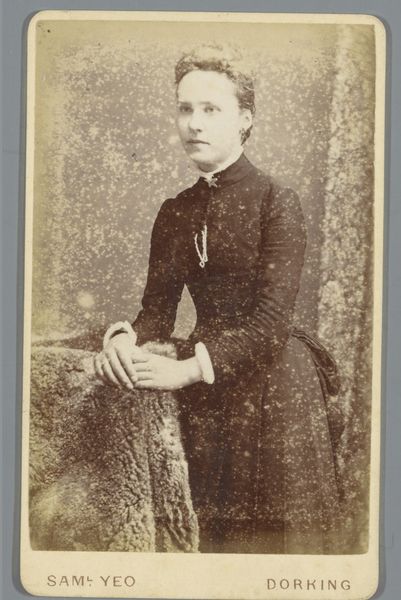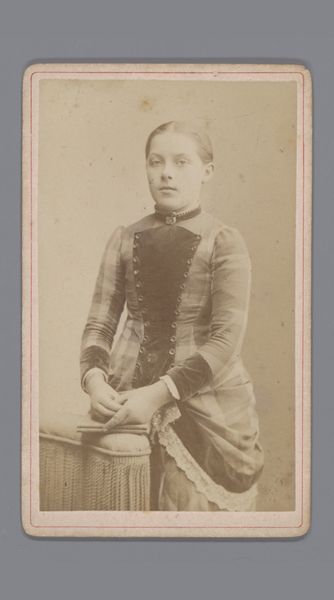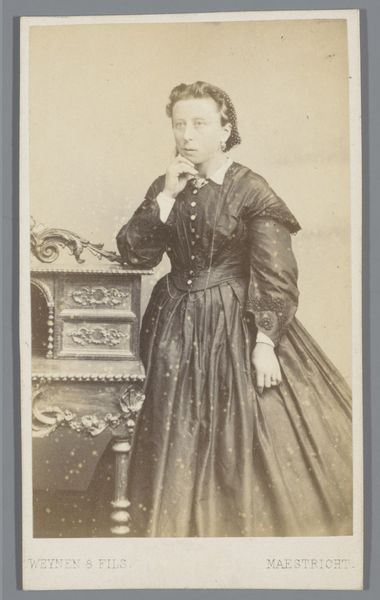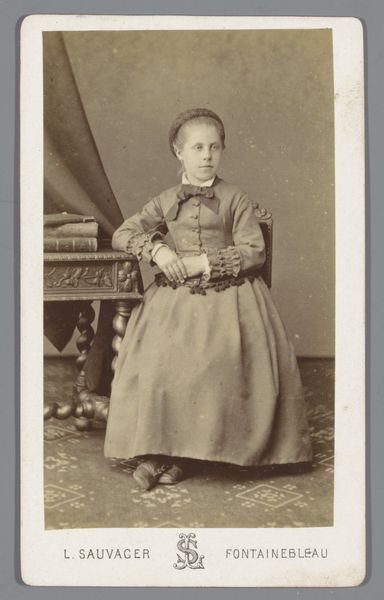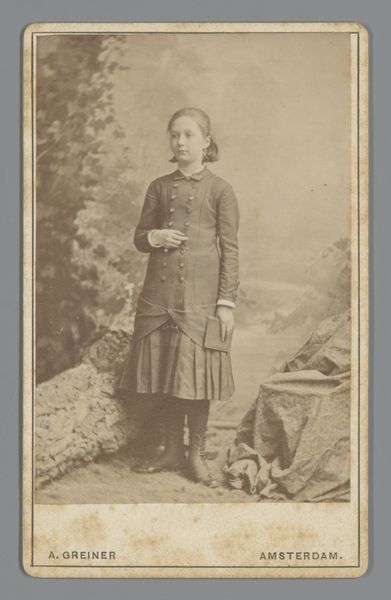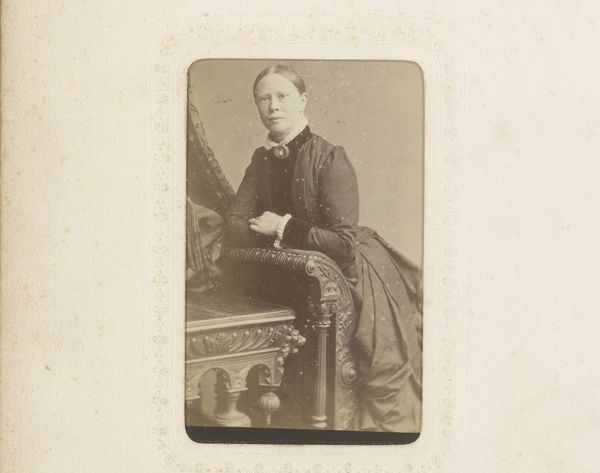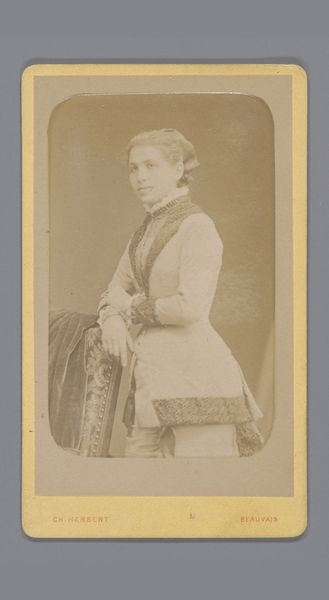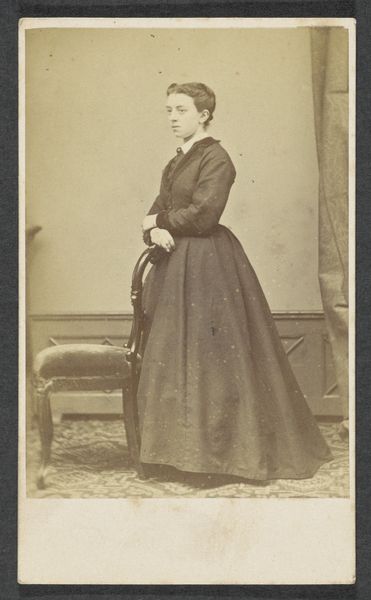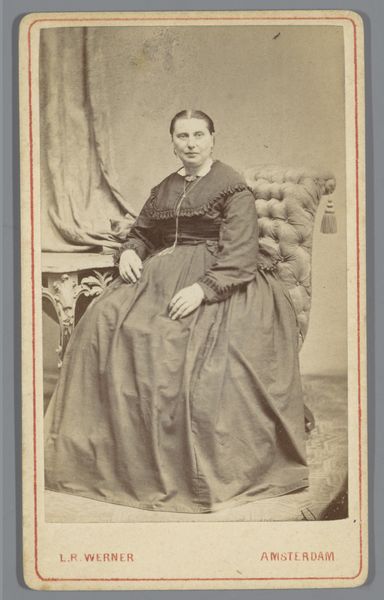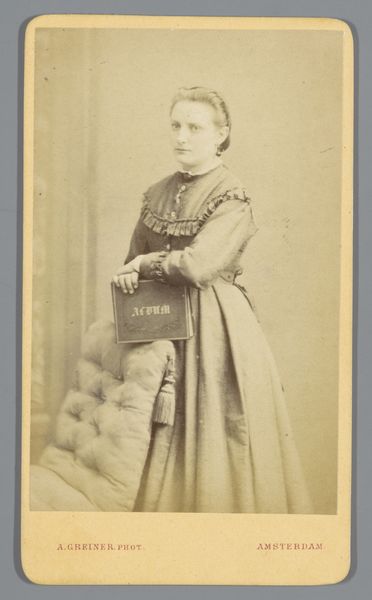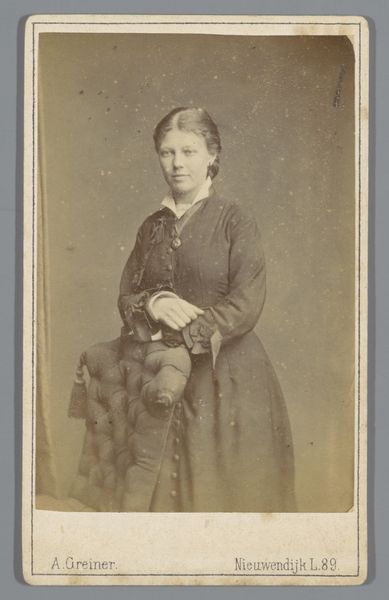
photography, gelatin-silver-print
#
portrait
#
photography
#
gelatin-silver-print
Dimensions: height 104 mm, width 64 mm
Copyright: Rijks Museum: Open Domain
Curator: Before us, we have Idanus Hendrikus Slaterus' gelatin silver print, “Portret van Fietje Anema,” created sometime between 1873 and 1892. Editor: It’s an unsettlingly direct gaze for a young girl; almost confrontational against the softened tones of the gelatin print. The high contrast areas seem so focused on her presence and clothes in such a posed, unnatural setting. Curator: Observe the symmetry and lines that dominate this portrait; the slight tilt of her head counterbalanced by the chair’s arm, forming an intricate system of balanced forms. It all coalesces to produce a perfectly rigid pyramidal structure. The photograph as object is just lovely: a muted and complex range of monochromatic shades—its composition carefully conceived through line and volume. Editor: The rigid structure to me speaks of societal constraints imposed upon women during this period. Every visual element here reinforces that constraint. This reads like an instrument to further codify those gender roles, the ornamental qualities serving as a visual shorthand for femininity and societal expectations that further constrain individual liberty. Curator: The composition uses the traditional visual language to underscore the sitter’s dignified place in the world—a formal composition appropriate for documenting what looks like a member of the Dutch upper class. Look at the lighting to further enforce this rigidity, each line perfectly emphasized in its specific use of light and shade. Editor: But at what cost? A society like the one that Slaterus inhabited created an unbearable psychological tension—reproducing a hierarchy that normalized child labor and restricted movement for women to certain acceptable places within society. I am most fascinated by the contrast between what Slaterus’ patrons expected and how subjects managed to exist within these strict societal constraints. We will never know how Fietje truly felt about this moment and this image. Curator: I remain focused on Slaterus' undeniable skill, how he could turn simple materials into compositions of visual complexity. This has staying power because the elements are well arranged and carefully considered; and his understanding of light, shape and symmetry create the captivating illusion of space that still fascinates viewers. Editor: And I think we agree that what lingers is how portraits such as this acted not merely as reflections of identity but also as key signifiers in the game of power. A system whose oppressive constraints have deeply resonant consequences in our society today.
Comments
No comments
Be the first to comment and join the conversation on the ultimate creative platform.
